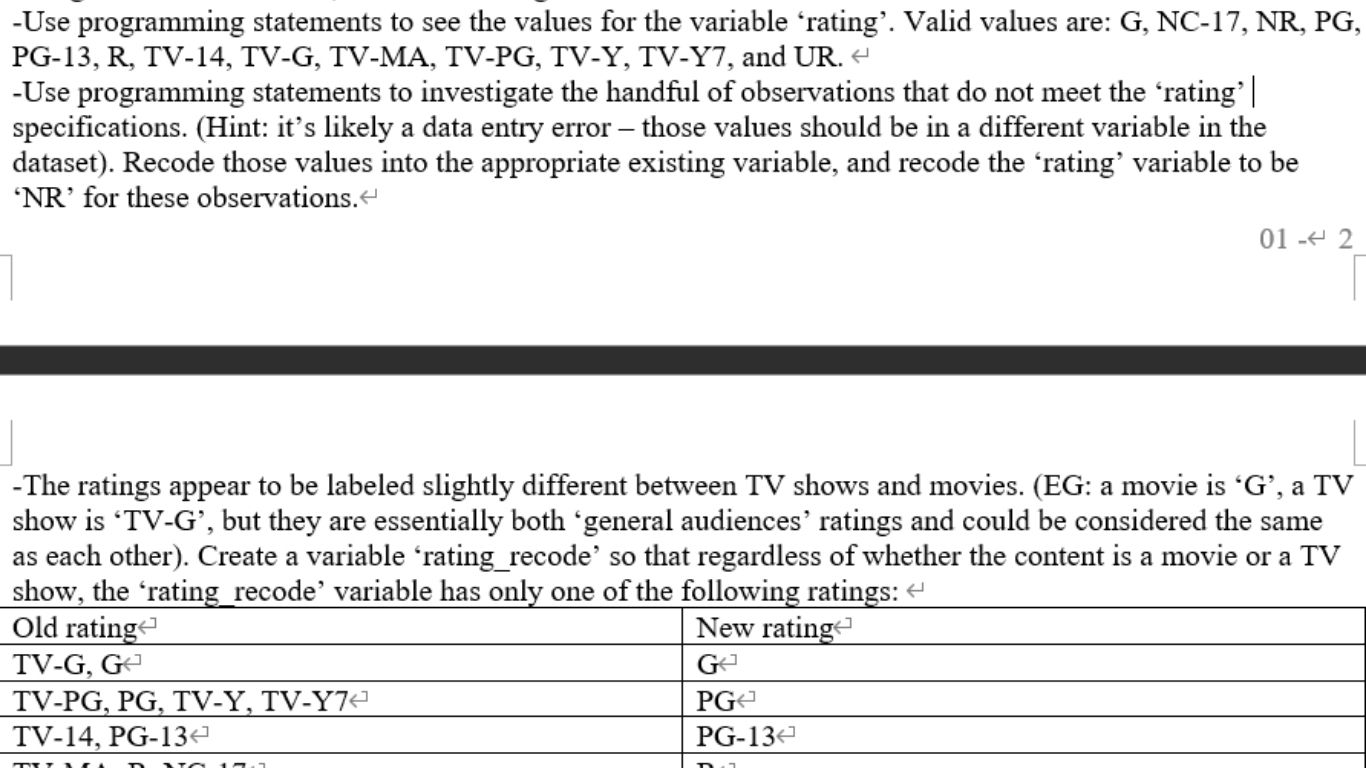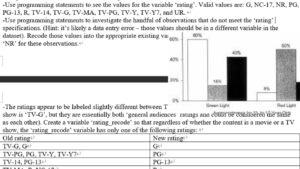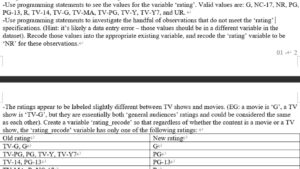Now Reading: What is the Difference between Pg And Tv 14: Explained
-
01
What is the Difference between Pg And Tv 14: Explained
What is the Difference between Pg And Tv 14: Explained

Are you puzzled by the ratings you see when you’re about to start a movie or show? Ever wondered what separates a “PG” rating from a “TV-14”?
Understanding these ratings can make a big Difference between Pg And Tv 14 in your viewing experience, especially if you’re choosing content for your family. Imagine having the confidence to select shows and movies that align with your values and comfort level. By the end of this article, you’ll gain clarity on these two ratings, helping you make informed decisions about what you and your loved ones watch.
Dive in and discover the key differences that can change the way you watch TV and movies forever.
Understanding Content Ratings
Content ratings guide viewers on appropriate material for different age groups. They help parents and guardians make informed choices. Two common ratings are PG and TV-14. Both serve distinct purposes. They cater to different audiences and have different criteria.
Purpose Of Ratings
Ratings protect viewers from unsuitable content. They ensure the material matches the viewer’s age and maturity. PG, or Parental Guidance, suggests some material may not suit children. Parents should decide if it is appropriate. TV-14, on the other hand, is for children above 14. It may contain intense material suitable for older audiences.
History Of Tv And Film Ratings
The Motion Picture Association introduced film ratings in 1968. Their goal was to inform parents about movie content. Over time, these ratings evolved. They now cover various media, including television. TV ratings appeared in 1997. They aimed to inform viewers about television show content. Both systems adapt to cultural changes. They reflect society’s values and expectations. This ensures content remains relevant and appropriate for audiences.

Pg Rating Details
PG ratings guide parents on suitable content for children. TV-14 may include more intense themes, language, or violence. Differences lie in the level of maturity required to comprehend content safely.
When choosing a movie for family night, you might come across ratings like PG and TV-14. Understanding what these ratings mean can help you make informed choices about what your family watches. PG Rating Details provide guidance on what to expect in terms of content and audience suitability. Let’s dive into the specifics of PG ratings and see how they differ from other ratings.
Meaning Of Pg
The PG rating stands for “Parental Guidance.” This means that some material may not be suitable for children, and parents are encouraged to provide guidance. While the content is generally mild, certain scenes might require parental explanation. Have you ever watched a movie with your kids and found yourself pausing to explain a scene? That’s the essence of a PG rating. It opens up opportunities for discussion and
.
Suitable Audience For Pg
PG-rated films are generally suitable for children of all ages, but parental guidance is recommended. These movies are designed to be family-friendly, yet they might include themes that need parental context. If you’re planning a movie night with younger kids, PG films can be a safe choice. But consider the maturity of your children. Are they ready to understand and discuss the themes presented?
Content Considerations In Pg
PG films may include mild language, occasional violence, or minimal sexual content. The material is not intense, but it can stir curiosity in young viewers. For example, animated movies often fall under the PG rating, allowing for fantasy elements and light-hearted action. As a parent, you can use these opportunities to discuss real-world implications. When selecting a PG movie, look for themes that align with your family values. Are there lessons to be learned or cultural insights to be gained? Choosing wisely can enhance the viewing experience. Remember, the PG rating is not a guarantee of appropriateness for every child. Your involvement and guidance make all the difference.
Tv-14 Rating Details
The TV-14 rating helps viewers understand the content better. It guides parents on what might be suitable for their children. The rating alerts that some material might not be appropriate for children under 14. Knowing these details can help families make informed choices about what to watch.
Meaning Of Tv-14
TV-14 means the show has material that may not suit young kids. It suggests that parents or guardians should watch with kids. The content may include mild violence, suggestive dialogue, or coarse language.
Suitable Audience For Tv-14
The TV-14 rating targets teens aged 14 and older. Younger kids might find some scenes disturbing or confusing. It’s important for parents to decide if a show is okay for their kids.
Content Considerations In Tv-14
Shows with a TV-14 rating might show some violence or strong language. They might have suggestive themes or situations. These elements make them unsuitable for younger viewers. Parents should be aware of these factors when choosing shows.

Key Differences
Understanding the difference between PG and TV-14 ratings is crucial for selecting suitable content. PG, or Parental Guidance, suggests some material may not be suitable for children. TV-14 indicates that content is specifically unsuitable for children under 14 due to stronger language or intense scenes.
Understanding the key differences between PG and TV-14 ratings is crucial for parents and guardians who want to ensure that the content their children consume is appropriate. These ratings guide us in choosing what is safe and suitable, but what do they really mean? Let’s break down the main differences to help you make informed decisions.
Age Appropriateness
PG, which stands for “Parental Guidance,” is generally suitable for children of all ages, but some material may not be appropriate for younger kids. Think of movies or shows with mild language or brief moments of violence. TV-14, on the other hand, is designed for viewers who are at least 14 years old. It often contains more mature themes that might not be suitable for younger audiences. This could include stronger language, intense violence, or suggestive dialogue.
Content Restrictions
PG content usually has fewer restrictions. It often includes mild language, minimal violence, and no explicit content. For example, a family movie with a few comedic slapstick moments would fall under this category. TV-14 content is more lenient in terms of what it can show. Expect more intense scenes, complex narratives, and moderate use of language. A TV drama with intricate plots and mature themes may carry this rating.
Parental Guidance Levels
With PG-rated content, parental guidance is advised but not strictly necessary. It’s more about being aware of the content and deciding if it’s suitable for your child. You might watch a PG movie with your child and explain certain scenes to provide context. TV-14, however, strongly recommends parental discretion. This is because the content might provoke questions or require explanations about mature topics. Watching a TV-14 show together offers an opportunity for discussion, allowing you to guide your child through understanding more complex themes. Choosing the right content isn’t just about following ratings blindly. It’s about understanding what each rating implies and how it aligns with your values and your child’s maturity. Ask yourself: Are you comfortable with the themes presented? Is your child ready to handle the content? Your role in guiding them is as crucial as the ratings themselves.
Impact On Viewership
Understanding the difference between PG and TV-14 ratings can affect viewership. These ratings guide parents in choosing shows suitable for their children. They also impact how audiences perceive content, shaping expectations and preferences.
Audience Expectations
PG-rated content is generally suitable for all ages. Parents expect mild themes and limited strong language. TV-14 content may include more mature themes. Viewers anticipate some violence or suggestive material. This can influence whether a family watches together or separately.
Influence On Viewing Choices
Rating affects choice. Families might prefer PG-rated shows for younger kids. Teens might lean towards TV-14 shows for relatable themes. These ratings help audiences decide what aligns with their comfort level.
Some viewers seek excitement in TV-14 content. Others prefer the safety of PG-rated shows. Ratings guide these decisions, impacting what people watch.
Guidance For Parents
As a parent, you often find yourself navigating the complex world of entertainment ratings, trying to ensure your child is consuming content that is appropriate for their age. You might wonder, what really sets a “PG” rating apart from a “TV-14” one? Understanding these differences is crucial in guiding your family’s viewing choices and maintaining a healthy media environment at home.
Monitoring Content
Keeping an eye on the content your children are exposed to is more than just reading ratings. It involves understanding what these ratings mean and how they align with your family’s values. A “PG” rating suggests that some material may not be suitable for children without parental guidance. This could include mild violence or brief language.
On the other hand, “TV-14” indicates that the program is specifically designed for children aged 14 and above. It often includes more intense violence, strong language, or suggestive themes. Are you comfortable with your child engaging with these topics, or do you prefer a more family-friendly experience?
Tools For Making Informed Decisions
Several resources can help you make informed decisions about what your children watch. Websites like Common Sense Media provide detailed reviews and age recommendations for movies and TV shows. These platforms offer insights beyond the basic ratings, helping you gauge the suitability of content.
Streaming services also come with built-in parental controls. These allow you to restrict access based on ratings or specific content types. Have you explored these options to tailor your child’s viewing experience according to your family’s preferences?
Engaging in open conversations with your children about what they watch can also be enlightening. Ask them about their thoughts on certain scenes or themes, and share your perspectives. This not only helps in making informed decisions but also strengthens your relationship with your child through shared experiences.
Frequently Asked Questions
What Does Pg Rating Mean?
The PG rating stands for Parental Guidance. It suggests that some content may not be suitable for children. Parents are advised to provide guidance. PG-rated content may contain mild violence, language, or themes. It’s considered suitable for most audiences with parental discretion.
What Does Tv-14 Rating Indicate?
The TV-14 rating is for content unsuitable for children under 14. It may include intense violence, sexual content, or strong language. Parents are strongly urged to monitor viewing. This rating ensures that younger viewers are protected from mature themes.
Can Children Watch Pg-rated Content?
Children can generally watch PG-rated content with parental guidance. The content may have mild violence or themes. It’s important for parents to be aware of what their children watch. This ensures that any potentially disturbing content is properly addressed.
Is Tv-14 Suitable For Family Viewing?
TV-14 is not generally suitable for young children. It may include more mature content than PG. Parents should consider the maturity of their children. Family viewing should be monitored, ensuring content is appropriate for all viewers.
Conclusion
Understanding PG and TV-14 ratings is crucial for viewers. These ratings guide families and protect young audiences. PG content may have mild language or themes. TV-14 includes stronger language or intense scenes. Choosing the right rating enhances safe viewing experiences.
Parents can use these guidelines to make informed choices. Being aware of these ratings helps in selecting age-appropriate content. It’s important for children’s safety and enjoyment. Remember, informed decisions lead to better viewing experiences. Consider these ratings for a balanced media diet.
Happy watching!





















